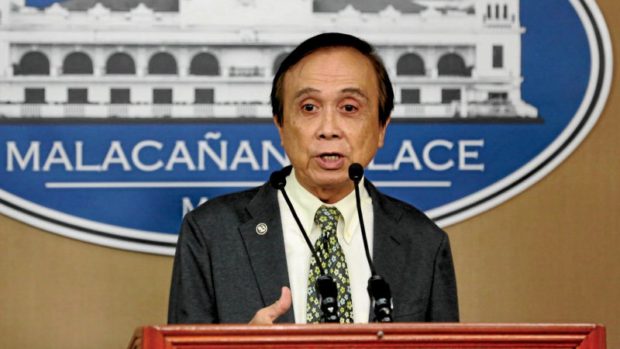
Socioeconomic Planning Secretary Ernesto M. Pernia (File photo by JOAN BONDOC / Philippine Daily Inquirer)
Strong imports growth that outpaced the increase in exports brought the trade deficit in October to its widest on record at $2.84 billion, the government reported Tuesday.
The value of imported products that entered the country rose for the third consecutive month in October, jumping 13.1 percent to $8.21 billion from $7.26 billion a year ago, preliminary Philippine Statistics Authority (PSA) data showed.
Exports also grew but by a slower 6.6 percent to $5.37 billion from $5.04 billion last year, posting the 11th straight month of year-on-year growth.
As such, total trade in October climbed 10.4 percent to $13.58 billion from a year ago’s $12.3 billion.
Largest monthly deficit
As imports growth and value exceeded those of exports, the total balance of trade in goods that month remained at a deficit and further increased from last year’s $2.22 billion.
“The trade deficit recorded in October was the largest monthly deficit since data compilation in 1991,” Socioeconomic Planning Secretary Ernesto M. Pernia said.
An economist at a leading bank noted that the jump in imports that month was driven by double-digit growth in capital goods, fuel and construction materials.
“There were lots of capital expenditures, but a deceleration from the past two years as power generation equipment was showing negative growth year-to-date,” the economist added.
Economic managers had said that as the Duterte administration embarks on its ambitions “Build, Build, Build” infrastructure program alongside expectations of sustained strong economic growth, demand for imports would remain robust in the near term.
The surge in imports, however, had reversed the current account to a deficit, which had the market worried and pulled the peso weaker in recent months.
Improved performances
A component of the balance of payments, the current account was expected to swing to a $600-million deficit this year from a $600-million surplus last year amid the government’s push to ramp up infrastructure investments leading to a surge in imports of capital goods.
The state planning agency National Economic and Development Authority nonetheless quoted Pernia as saying that “for 2018, we are looking at improved performances in exports of agricultural products and semiconductors, which continue to comprise a huge portion of Philippine exports.”
Amid greater trade facilitation and recently signed free-trade agreements such as the Asean-Hong Kong Free Trade Agreement as well as the Asean-Hong Kong Investment Agreement, “Philippine exports will likely remain in the positive territory and should pick up due to higher demand during the holiday season,” said Pernia.